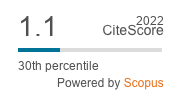The formation of a polycentric model of commercial activity in Greater Santiago (Chile)
Keywords:
Commercial activities, monocentric model, polycentric modelAbstract
In this work the spatial organization of commercial activity in Greater Santiago is the focus of study, itself a product of the disaggregation of the traditional monocentric model. In particular the article explores the configuration of the emerging polycentric model and the factors that are forming it. Its spatial structure is governed by the distance to the centre of traditional businesses (CBD), by the spatial distribution of rent and population, by accessibility and by the form of the transport network. Commercial and service centres are nodes of centrality that configure the patterns of urban mobility. They confer a particular physiognomy to the urban scene and constitute privileged places for social relations.
Downloads
References
ASCHER, F. Metapolis ou l´avenir des villes. París: Odile Jacob, 1995.
BEAVON, K. Geografía de las actividades terciarias. Una reinterpretación de la teoría de los lugares centrales. Barcelona: Oikos-Tau, 1981.
BERRY, B. Geografía de los centros de mercado y distribución al por menor. Barcelona: Vicens Vives, 1972.
BERTAUD, A. & MALPEZZI, S. The Spatial Distribution of Population in 35 World Cities: The Role of Markets, Planning and Topography. Comunicación presentada en American Real Estate and Urban Economics Association, New York, 1999.
BERTAUD, A. Metropolis: A Measure of the Spatial Organization of 7 Large Cities. 2001. Disponible en Internet: http://alainbertaud. com
CAPRON, G. Rassemblement et dispersion dans la ville latino-americane: un novel espace public urbain, le cas du centre commercial. Cahiers des Amériques
Latines (CAL), 2001, Nº 35, p. 41-56.
CHRISTALLER, W. Central Places in Southern Germany . Englewood Cliffs: Prentice Hall, 1996. (edición original en alemán: 1933).
DUCCI, M. ¿Una mancha de aceite sin fin? ¿Qué pasa con la población cuando la ciudad crece indiscriminadamente?. EURE, 1998, Vol. 24, N° 27, p. 85-94.
ESCOLANO, S. y ORTIZ, J. Movilidad espacial de la población y cambios estructurales recientes en ciudades del sistema urbano chileno. Comunicación presentada en VI I Congreso AGEAmérica Lat ina , Madr id, 2004 (en prensa).
GREEN, M. Housing and community consolidation in informal settelements: a case of movement economy. Comunicación presentada en Procedings of Space Syntax, 4th International Symposium, Londres, 2003, Vol. I, p. 24-38.1-38.
HILLIER, B. & HANSON, J. The social logic of space. Cambridge: Cambridge University Press, 1984
HILLIER, B.; PENN, A.; HANSON, J.; GRAJEWSKI, T. & XU, J. Natural movement: or configurational and attraction in urban pedestrian movement. Environment & Planning, 1993, N° 20 B, p. 29-66.
ORTIZ, J. y ARAVENA, E. Migraciones intraurbanas y nuevas periferias en Santiago de Chile: Efectos en la sociogeografía de la ciudad. GeoFocus, 2002, Nº 2, p. 49-60. Disponible en Internet: http://www.geofocus.rediris.es
SABATINI, F.; CÁCERES, G. y CERDÁ, J. Segregación residencial en las principales ciudades chilenas: Tendencia de las tres últimas décadas y posibles cursos de
acción”. EURE, 2001, Vol. 27, N° 82, p. 21-42.






